I Ching – The Book of Changes – World’s Oldest Book Of Wisdom Used To Predict Future Events
Ellen Lloyd - AncientPages.com - The Book of Changes - I Ching in Chinese is one of the most important ancient books ever written. The Book of Changes has been used as an aid to foretell the future and make decisions for thousands of years.
It is thought to be the oldest book of the Earth. According to many people it is one of our greatest treasures of wisdom. Confucius, one of the greatest Chinese philosophers said that by following the advices of the book, and studying it constantly, we can attain creative awareness in every situation.
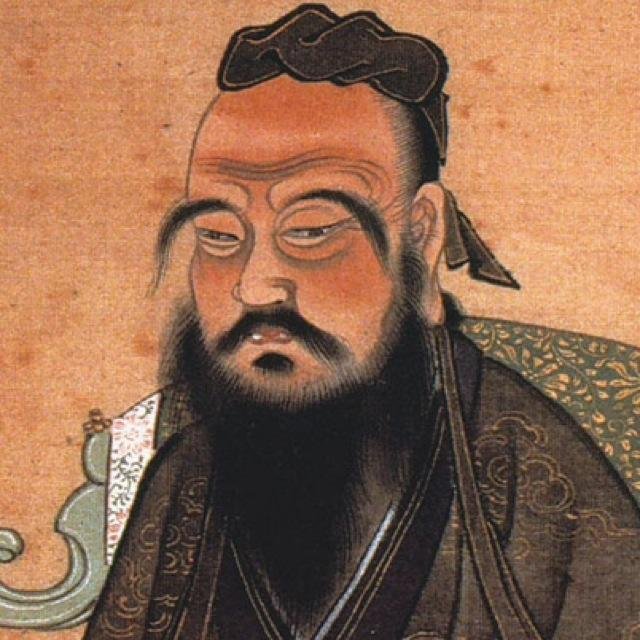
Confucius said that by following the advices of the book, and studying it constantly, we can attain creative awareness in every situation.
The book's origin goes back to mythical antiquity and it has occupied the attention of the most eminent scholars of China down to the present day.
"The I Ching, sometimes called the Yi Jing, is an ancient Chinese text based on the psychology of individualization process, that is to say the improvement of one's psyche through ''character training", a fundamental principle of the Book of Changes.
Like the Temple of Apollo at Delphi which had the words "know thyself" inscribed in the pronaos (forecourt), it will be seen that the Book of Changes is, in essence and in its ambiguity, a mirror into one's self through the development of one's psyche.
Embodied within the framework of the I Ching is a philosophical system, a method of divination, and it contains many historical events that are for the most part hidden among the hexagrams and lines. It is a work which in its time has influenced some of China's greatest thinkers and has played a large role in Taoism and Confucianism. It is one of the "five ancient classics" and probably the oldest written form of known divination in the world still reasonably intact," writes author Graham Taylor in his book "Discovering the Book of Changes - a Journey
The I-Ching was first introduced to the western world by missionary in late Ming Dynasty and explained by Germany mathematician with binary code.
The book's origins date back about 5000 years to the time of the mythical ruler Fu Hsi., one of the earliest legendary rulers of China (2800 BC-2737 BC).
Ancient Chinese legend says that I Ching originated with the mythical Fu Xi, one of the earliest legendary rulers of China (2800 BC-2737 BC), reputed to have had the 8 trigrams revealed to him supernaturally.
Fu Hsi was said to have found the eight trigrams that form the sixty-four hexagrams on the shell of a tortoise. It is said that FU His Fu Hsi had the 8 trigrams revealed to him supernaturally.
The meanings evolved from then on but the book was used mostly for predicting natural events until King Wen wrote the first expositions on the sixty-four hexagrams about 3,000 years ago. He wrote them while in prison from a vision on the prison wall. These were the first comments that included social and political connotations.
Each inquiry to the oracle will result in a hexagram reading and possibly additional line readings. A hexagram is made up of two trigrams. There are eight possible trigrams: Ch'ien (Cosmos), Chen (Thunder), K'an (Water), Ken (Mountain), K'un (Earth), Sun (Wind/Wood), Li (Fire), and Tui (Lake). Each trigram is made up of three lines. Each line is either broken or solid, corresponding to the complementary forces Yin (negative) and Yang (positive). Every time a coin is thrown, one line of the hexagram is determined, thus, six throws decide a hexagram.
These eight trigrams were conceived as images of all that happens in heaven and on earth. At the same time, they were held to he in a state of continual transition, one changing into another, just as transition from one phenomenon to another is continually taking place in the physical world.
See also:
- Ancient Mystery Of Baktiotha And The Egyptian Spell Book
- The Egyptian Dream Book Reveals Ancient Predictions Of The Future
- Gog And Magog Prophecy In The Book Of Revelation
There are sixty-four different hexagrams, and each hexagram has six changing lines, any one of which may or may not apply for any particular reading. One method for casting the oracle is to use three Chinese coins for the throws. Each throw creates one line of the hexagram. One side of the coin represents a two and the other a three. These numbers are added to determine the result of the throw.
Changing lines are created if there are any three-of-a-kind throws (a total of six or nine). The secondary reading can be thought of as changing from the primary reading and is only created if there are changing lines in the primary reading.
To use the I-Ching, a person uses either coin tosses or yarrow stalks to generate a hexagram and receive their divination statement.
Modern day researchers still puzzle over the book's mysteries and first-time users are often struck by the poignancy of the answers it gives.
Written by - Ellen Lloyd – AncientPages.com
Copyright © AncientPages.com All rights reserved. This material may not be published, broadcast, rewritten or redistributed in whole or part without the express written permission of AncientPages.com
More From Ancient Pages
-
 Ornaments And Human Remains Found In The Walled Complex Utzh An In Chan Chan, Peru
Archaeology | Jul 15, 2024
Ornaments And Human Remains Found In The Walled Complex Utzh An In Chan Chan, Peru
Archaeology | Jul 15, 2024 -
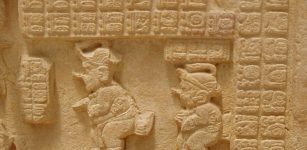 Alux: Little Mythical Troublemaker And Guardian Of Corn Fields In Mayan Folklore
Featured Stories | Jun 11, 2019
Alux: Little Mythical Troublemaker And Guardian Of Corn Fields In Mayan Folklore
Featured Stories | Jun 11, 2019 -
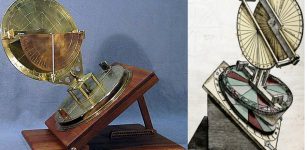 Torquetum: Sophisticated Medieval Astronomical Instrument
Ancient History Facts | Jul 12, 2018
Torquetum: Sophisticated Medieval Astronomical Instrument
Ancient History Facts | Jul 12, 2018 -
 Secrets Of The Melsonby Hoard – Largest Iron Age Treasure In The UK
Archaeology | Mar 27, 2025
Secrets Of The Melsonby Hoard – Largest Iron Age Treasure In The UK
Archaeology | Mar 27, 2025 -
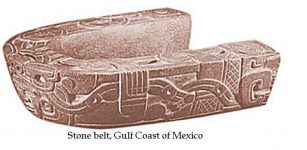 Millennia Old Ceremonial Stone Belt And Maya Pok-A-Tok Ball Game
Ancient Traditions And Customs | Nov 28, 2017
Millennia Old Ceremonial Stone Belt And Maya Pok-A-Tok Ball Game
Ancient Traditions And Customs | Nov 28, 2017 -
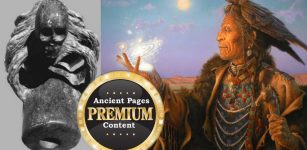 Unusual Ancient Spider Pipes Of Tennessee – Were They Used By Shamans To Enter The Spirit World?
Ancient Mysteries | Feb 18, 2018
Unusual Ancient Spider Pipes Of Tennessee – Were They Used By Shamans To Enter The Spirit World?
Ancient Mysteries | Feb 18, 2018 -
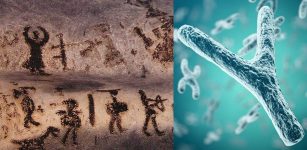 Puzzling Biological Event 7,000 Years Ago – Something Weird Happened To Men
Archaeology | Jun 1, 2018
Puzzling Biological Event 7,000 Years Ago – Something Weird Happened To Men
Archaeology | Jun 1, 2018 -
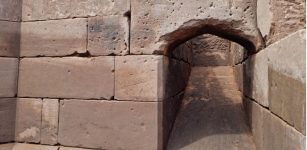 Unexpected Archaeological Discovery May Re-Write English Civil War History
Archaeology | Feb 3, 2023
Unexpected Archaeological Discovery May Re-Write English Civil War History
Archaeology | Feb 3, 2023 -
 On This Day In History: James Cook – Navigator And Explorer – Killed On Feb 14, 1779
News | Feb 14, 2017
On This Day In History: James Cook – Navigator And Explorer – Killed On Feb 14, 1779
News | Feb 14, 2017 -
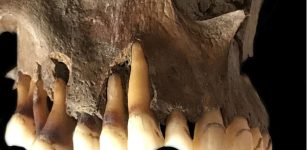 First Kisses May Have Helped Spread Oral Herpes 5,000 Years Ago – Scientists Say
Archaeology | Jul 30, 2022
First Kisses May Have Helped Spread Oral Herpes 5,000 Years Ago – Scientists Say
Archaeology | Jul 30, 2022 -
 Beautiful Ancient Irish Legend Of The Blessing Of The Bees – Ancient Tradition Revived In Ireland Again
Ancient Traditions And Customs | Oct 11, 2017
Beautiful Ancient Irish Legend Of The Blessing Of The Bees – Ancient Tradition Revived In Ireland Again
Ancient Traditions And Customs | Oct 11, 2017 -
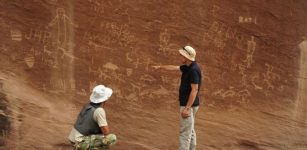 Archaeologists Discover Previously Unknown Huge Galleries And Petroglyphs In Colorado
Archaeology | Dec 15, 2023
Archaeologists Discover Previously Unknown Huge Galleries And Petroglyphs In Colorado
Archaeology | Dec 15, 2023 -
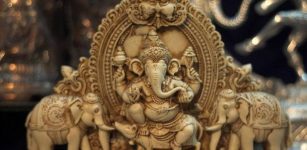 Ganesha: Elephant-Headed God Of Knowledge, Learning, Literature And Scribe Of The Mahabharata
Featured Stories | Aug 17, 2016
Ganesha: Elephant-Headed God Of Knowledge, Learning, Literature And Scribe Of The Mahabharata
Featured Stories | Aug 17, 2016 -
 Rök Stone (Rök Runestone): Longest Runic Inscription Ever Discovered
Featured Stories | Jun 12, 2024
Rök Stone (Rök Runestone): Longest Runic Inscription Ever Discovered
Featured Stories | Jun 12, 2024 -
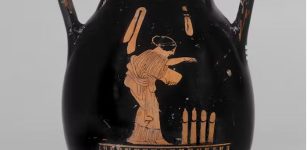 The Long And Satisfying 28,000-Year History Of The Dildo
Featured Stories | Feb 27, 2023
The Long And Satisfying 28,000-Year History Of The Dildo
Featured Stories | Feb 27, 2023 -
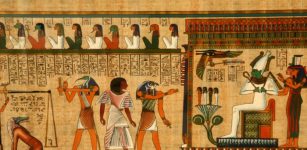 First Book Of Breathing: Egyptian Papyrus Sheds Light On Funerary Text Helping The Deceased In Afterlife
News | Oct 22, 2020
First Book Of Breathing: Egyptian Papyrus Sheds Light On Funerary Text Helping The Deceased In Afterlife
News | Oct 22, 2020 -
 Rare And Well-Preserved Inka Tunic Discovered In Chile
Archaeology | Feb 14, 2023
Rare And Well-Preserved Inka Tunic Discovered In Chile
Archaeology | Feb 14, 2023 -
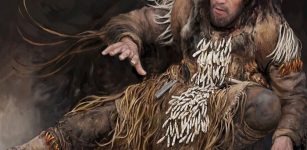 Elk Tooth Rattlers And People’s Dance 8,000 Years Ago
Archaeology | Jun 4, 2021
Elk Tooth Rattlers And People’s Dance 8,000 Years Ago
Archaeology | Jun 4, 2021 -
 Megalithic Structures Are Not Mass Graves For Neolithic Plague Victims
Archaeology | Sep 9, 2024
Megalithic Structures Are Not Mass Graves For Neolithic Plague Victims
Archaeology | Sep 9, 2024 -
 Why Did Stone Age People Cut Off Their Fingers?
Archaeology | Dec 6, 2018
Why Did Stone Age People Cut Off Their Fingers?
Archaeology | Dec 6, 2018


